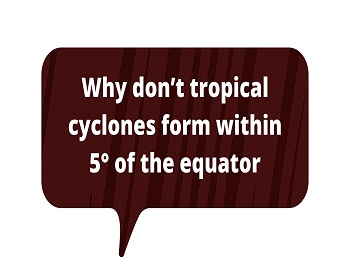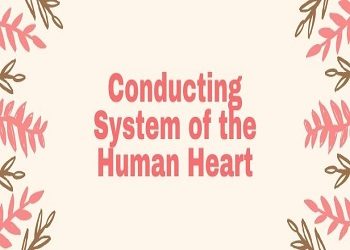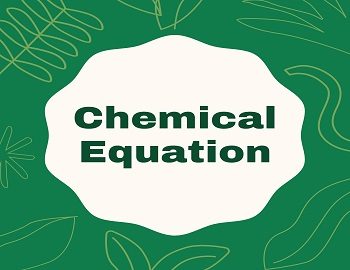Table of Contents
Air Pollution:
Air pollution means the spreading of harmful substances in the air. Such harmful or undesirable substances are called pollutants. Air pollution is generally referred to as the contamination of air that results from the activities of man.
The burning of substances generally cause pollution. All fuels contain carbon which on burning in air produces carbon dioxide. If the fuel does not burn completely, then both carbon dioxide and carbon monoxide are formed. Carbon monoxide is a poisonous gas. That is why the burning of coal in a closed room proves fatal.
Smoke from factories is made up of tiny particles of carbon, ashes, and unburned fuel. Similarly, cement factories, steel plants, and chemical factories produce large amounts of particles that pollute the air. Sulphur dioxide gas is produced during the processing of metals like zinc and aluminum. A large number of vehicles on the road also adds to air pollution. They emit carbon monoxide which is very harmful.
Causes/Sources of Air Pollution:
Natural Sources of Air Pollution:
- The natural sources of air pollution are volcanic eruptions, forest fires, sea salt sprays, biological decay, photochemical oxidation of terpenes, marshes, extraterrestrial bodies, pollen grains of flowers, spores, etc. Radioactive minerals present in the earth’s crust are the sources of radioactivity in the atmosphere.
Man-made Sources of Air Pollution:
- Man-made sources include thermal power plants, industrial units, vehicular emissions, fossil fuel burning, agricultural activities, etc. Thermal power plants have become the major sources for generating electricity in India as nuclear power plants couldn’t be installed as planned. The main pollutants emitted are fly ash and SO2. Metallurgical plants also consume coal and produce similar pollutants. Fertilizer plants, smelters, textile mills, tanneries, refineries, chemical industries, paper, and pulp mills are other sources of air pollution.
- Automobile exhaust is another major source of air pollution. Automobiles release gases such as carbon monoxide (about 77%), oxides of nitrogen (about 8%), and hydrocarbons (about 14%). Heavy-duty diesel vehicles spew more nitrogen oxides and suspended particulate matter (SPM) than petrol vehicles which produce more carbon monoxide and hydrocarbons.
Indoor Air Pollution:
- The most important indoor air pollutant is radon gas. Radon gas and it’s radioactive daughters are responsible for a large number of lung cancer deaths each year. Radon can be emitted from building materials like bricks, concrete, tiles, etc. which are derived from soil containing radium. Radon is also present in groundwater and natural gas and is emitted indoors while using them.
- Other causes of Indoor air pollution is poorly designed ventilation systems of buildings; Gases from stoves and furnaces; Households chemicals, fiber particles and hazardous fumes released from building materials like paints, insulations, glues, etc. ; Vapours of surfactants, toilet cleaners, perfumes, fresheners, volatile materials, insecticides, deodorants, shampoos, etc.
Industrial Accidents:
- They often release large quantities of highly polluting toxic chemicals. One such accident (Bhopal Gas Tragedy) liberated 36 tonnes of methyl isocyanate (MIC) from the Union Carbide Factory in 1984. Ammonia leakage is quite common.
Effects of Air Pollution on Man:
- Flowers pollen grains, fungal spores, and suspended fine dust particles are responsible for causing various allergic reactions.
- Sulphur dioxide enters the soft tissues causing drying of the mouth, scratchy throat, and smarting eyes.
- Oxides of carbon, sulphur, and nitrogen diffuse into the bloodstream to combine with haemoglobin causing a reduction in its oxygen-carrying capacity. Carbon monoxide severely damages the cardiovascular system and disturb psychomotor functions.
- Ozone and Peroxyacetyl nitrate (PAN) produce respiratory distress, internal hemorrhages, irritation to the nose and throat.
- Lead causes anaemia, headache, loss of appetite, damage to red blood corpuscles, and central nervous system. Lead also induces abnormalities in fertility and pregnancy.
- Polychlorinated Biphenyls (PCBs) are produced during the burning of plastic. PCBs impair vision, damage the liver, and central nervous system. The skin undergoes pigmentation.
- Fine dust particles and cotton dust cause bronchitis and asthma.
- Black lung disease is caused among coal miners who inhale mine dust for many years.
- Asbestosis is caused among pipefitters and insulation workers exposed to airborne asbestos fibers. Asbestos dust causes lung cancer.
Effects of Air Pollution on Vegetation:
- Air pollutants affect plants by entering through stomata (leaf pores through which gases diffuse), destroy chlorophyll, and affect photosynthesis.
- Hydrocarbons like ethylene cause immature leaf fall, shedding of floral buds, curling, and discoloration of petals.
- Oxides of nitrogen and fluorides reduce crop yield.
- Fluorides destroy the leaf tissues causing chlorosis (loss or reduction of chlorophyll causing yellowing of leaf) and necrosis (dead areas of the leaf) of leaf apex and margins.
- Photochemical smog bleaches and blazes foliage of economically important plants and crops.
- Ozone damages cereal, fruits, cotton, crop, etc. and also causes immature yellowing and abscission i.e. dropping of leaves.
Effects on Aquatic Life:
- Air pollutants mixing up with rain can cause high acidity (lower pH) in freshwater lakes. This affects aquatic life especially fish. Some of the freshwater lakes have experienced total fish death.
Other Effects of Air Pollution:
- Air pollution causes acid rains, global warming or the greenhouse effect, and climate change. The higher atmospheric temperature will cause the melting of glaciers and ice caps, raise water levels in oceans, submerge several islands, develop different rain patterns, and increased desertification.
- Air pollution also causes depletion of the ozone layer in the upper atmosphere. Depletion of ozone results in the passing of more ultra-violet rays to the surface of earth causing a reduction in photosynthetic activity of producers, increased blindness in animals, and higher incidences of skin cancer.
- Air pollution ruins a beautiful landscape. Gases released from decomposing bodies and wastes make the community life unpleasant. This is called the Aesthetic Effect of Air pollution.
- Air pollution causes serious damage to our historical monuments as it causes acid rain. The acid in rainwater reacts with marble/limestone used in these buildings. Ozone in the air oxidizes rubber and hydrogen sulfide decolorizes paints.
Control of Air Pollution:
- Plant a large number of trees because they absorb carbon dioxide and release oxygen in the air.
- Pass exhaust gases containing toxic gases such as sulphur dioxide and nitrogen dioxide through water before they leave chimneys of factories and petroleum refineries.
- Use catalytic converters in automobiles in order to convert poisonous carbon monoxide gas and nitrogen dioxide into harmless and odorless carbon dioxide, nitrogen, and water.
- Leaded petrol should be replaced by unleaded petrol (gasoline). It will reduce lead pollution and spare the metal from over-consumption.
- Use electrostatic precipitators that remove solid carbon particles from the smoke of factories.
- Use alternative sources of energy like electrical energy, solar energy, nuclear energy, etc. in place of coal energy.
- Using biological filters and bio-scrubbers.
- Shifting to less polluting (clean) fuels (hydrogen gas). Use liquefied natural gas (LNG) in power plants, fertilizer plants, etc. which is cheaper in addition to being environmentally friendly.
- Have an efficient transport system in the metropolitan cities so that fewer people need to drive. Fewer vehicles on the road would mean less pollution.
- Nuclear explosions should be avoided.
- Control on the burning of plastics and agricultural wastes.
- Putting a ban on ‘slash and burn‘ cultivation.
What is Smog?
- Smog is the combination of smoke particles with tiny droplets of fog containing poisonous gases discharged by the burning of fossil fuels in homes, industries, and automobiles. The harmful gases present in smog are usually sulphur dioxide or peroxyacyl nitrate (Peroxyacetyl nitrate, PAN).
- Smog causes diseases like bronchitis, asthma, and heart-related disorders. It also causes irritation to the eyes, nose, and throat. Smog also causes disruption of road and air traffic by reducing the visibility to a very low level.
What is Fly-Ash?
- The small ash particles formed by the combustion of fossil fuels like coal are carried into the air by the gases produced during combustion and form fly-ash.
- This fly-ash also contains partially burnt particles of the fuel.
- The examples of fly-ash are coal ash and ash coming out from a bioler.
- The chimneys of coal-based thermal power stations emit a lot of fly-ash which pollutes the air.









Comments (No)